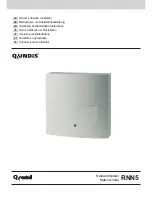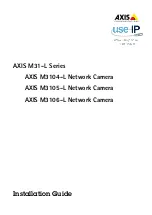
44-19
Catalyst 4500 Series Switch, Cisco IOS Software Configuration Guide - Cisco IOS XE 3.9.xE and IOS 15.2(5)Ex
Chapter 44 Configuring Quality of Service
Configuring VSS QoS
•
“Hardware Capabilities for Marking” section on page 44-57
•
“Configuring the Policy Map Marking Action” section on page 44-57
•
“Marking Statistics” section on page 44-59
Information About Marking Network Traffic
To mark network traffic, you should understand the following concepts:
•
“Purpose of Marking Network Traffic” section on page 44-53
•
“Benefits of Marking Network Traffic” section on page 44-53
•
“Two Methods for Marking Traffic Attributes” section on page 44-54
Purpose of Marking Network Traffic
Traffic marking is used to identify certain traffic types for unique handling, effectively partitioning
network traffic into different categories.
After the network traffic is organized into classes by traffic classification, traffic marking allows you to
mark (that is, set or change) a value (attribute) for the traffic belonging to a specific class. For instance,
you may want to change the class of service (CoS) value from 2 to 1 in one class, or you may want to
change the differentiated services code point (DSCP) value from 3 to 2 in another class. In this module,
these values are referred to as attributes or marking fields.
Attributes that can be set and modified include the following:
•
CoS value of a tagged Ethernet frame
•
DSCP/Precedence value in the Type of Service (ToS) byte of IPv4.
•
DSCP /Precedence value in the traffic class byte of IPv6
Benefits of Marking Network Traffic
Traffic marking allows you to fine-tune the attributes for traffic on your network. This increased
granularity helps isolate traffic that requires special handling, and thus, helps to achieve optimal
application performance.
Traffic marking allows you to determine how traffic will be treated, based on how the attributes for the
network traffic are set. It allows you to segment network traffic into multiple priority levels or classes of
service based on those attributes, as follows:
•
Traffic marking is often used to set the IP precedence or IP DSCP values for traffic entering a
network. Networking devices within your network can then use the newly marked IP precedence
values to determine how traffic should be treated. For example, voice traffic can be marked with a
particular IP precedence or DSCP and strict priority can then be configured to put all packets of that
marking into that queue. In this case, the marking was used to identify traffic for strict priority
queue.
•
Traffic marking can be used to identify traffic for any class-based QoS feature (any feature available
in policy map class configuration mode, although some restrictions exist).
•
Traffic marking can be used to assign traffic to a QoS group within a switch. The switch can use the
QoS groups to determine how to prioritize traffic for transmission. The QoS group value is usually
used for one of the two following reasons:
–
To leverage a large range of traffic classes. The QoS group value has 64 different individual
markings, similar to DSCP.
Summary of Contents for Catalyst 4500 Series
Page 2: ......
Page 4: ......
Page 2086: ...Index IN 46 Software Configuration Guide Release IOS XE 3 9 0E and IOS 15 2 5 E ...
















































